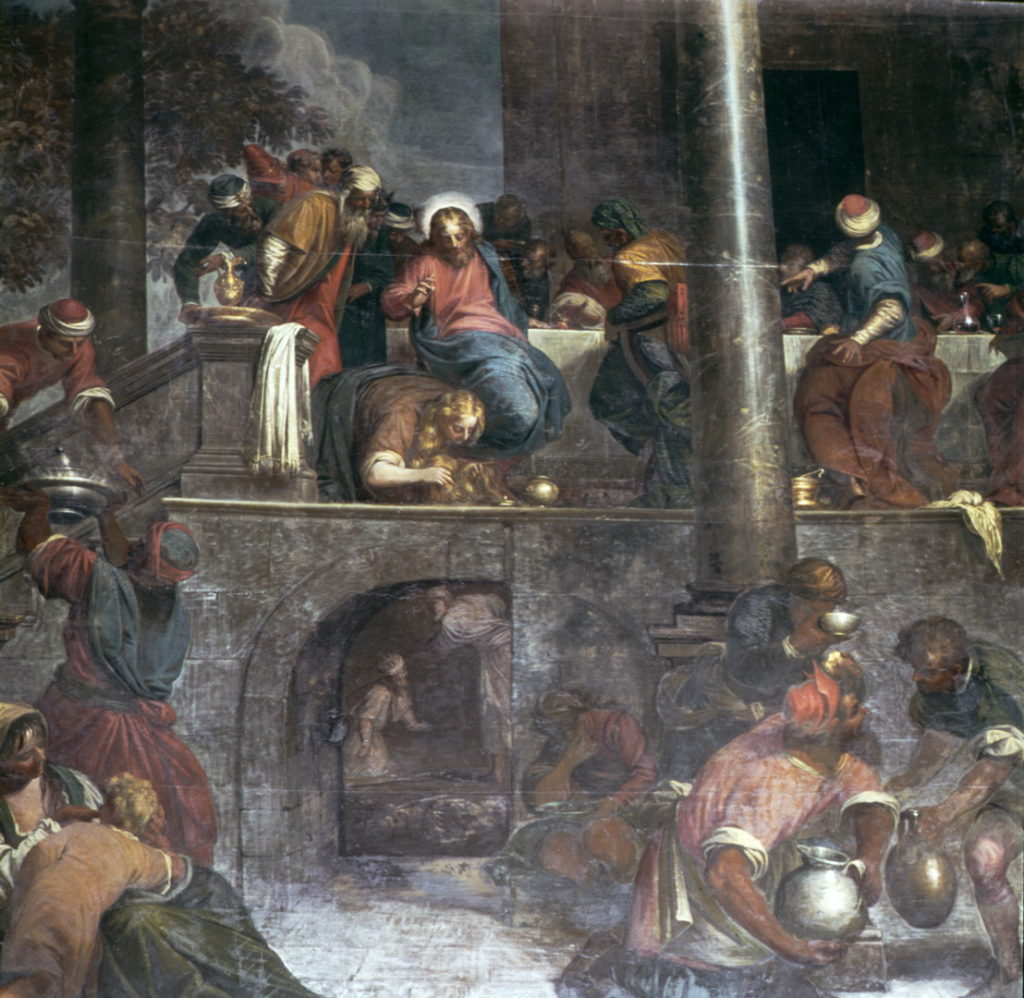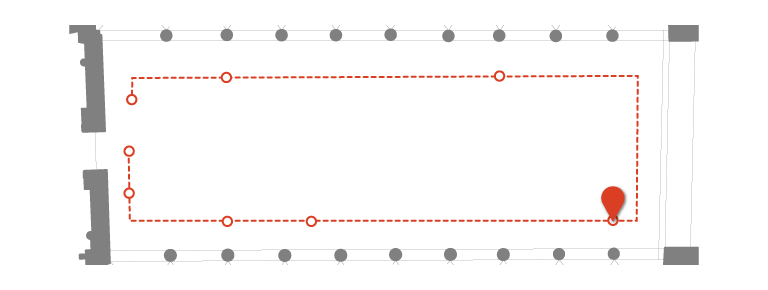Tu sei qui
CHRIST IN THE PHARISEE’S HOUSE AND THE PROPHET NATHAN REPROACHING KING DAVID FOR HIS SIN
The large canvasses by Antonio Vassilacchi, a painter of Greek origin who trained under Veronese and Tintoretto in Venice during the second half of the 16th century, can be considered as a monumental, visual catechesis of high theological and didactic value. This canvas, depicting Jesus pardoning the adulteress in the Pharisee’s house, also features the prophet Nathan reproaching King David for his sin in the background. It becomes apparent, therefore, that the coming of Christ brings to fulfillment the divine events narrated in the Old Testament: pardon and the mercy of God are granted to whomever sincerely repents, and are the hope every sinner has of redemption. The main scene is set in a splendid building, where a number of figures move about in varying poses. The dark tone of the painting is pierced by the brilliance of the figure of Christ. This particular use of light, as well as the theatrical setting, are the result of l’Aliense assimilating the teaching of Veronese, through the interpretation of Tintoretto.


